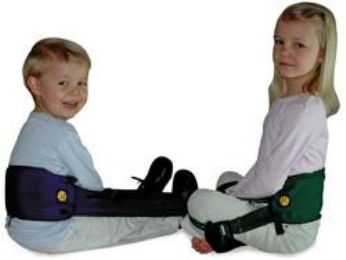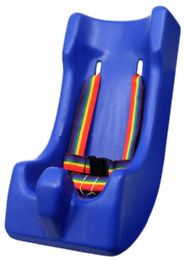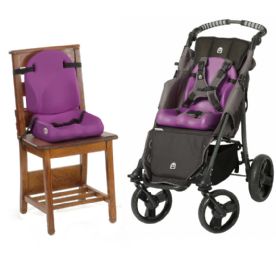










Special Needs Children
A physical disability may affect a child at birth, or it may develop over time. There are many different types of disabilities that can impair their development. One type can be an orthopedic impairment, which can be acquired after birth, or a congenital physical motor impairment they are born with. Other types of developmental disorders include cerebral palsy, spina bifida, muscular dystrophy, arthritis, congenital anomalies, osteogenesis imperfecta, or arthrogryposis.
What are some characteristics of a special needs child?
Physical characteristics of children with a physical disability are inclusive of one or a combination of two or more physical issues that affect their ability to sit or stay positioned, and to interact with their peers. Some characteristics that may be evident in an affected child are paralysis, altered muscle tone, sensory disturbance, or unsteady gait. Others characteristics may include non-ambulation that requires an alternate means of mobility, loss of/or inability to use one or more limbs, and poor gross, fine, and/or oral motor control.
Often, children with physical disabilities have additional challenges, such as learning disabilities, visual or hearing impairments, or cognitive delay. A child with a physical impairment may need adapted materials or equipment, such as special needs seating, as well as added support from caregivers, teachers, or other professionals. A combination of adapted materials and professional support can help modify and adapt the learning and teaching environment to meet the child’s specific needs.
How do I Choose a Pediatric Sitter?
When choosing a pediatric sitter to help aid a child with any type of physical disability, there are several factors to be considered. These are the child’s age, their developmental or cognitive status, their physical abilities, their present needs, and their future needs.
Children with physical disabilities will need well supported seating and positioning to be able to function at an optimal level. Functional limitations may be caused by improper seating and positioning. The best seated posture is one where the child’s trunk is supported in an upright and centered position. The head should be in the midline of the body with as much freedom of movement as possible. This encourages their interaction with others and visual attentiveness to their environment. The hips should stay bent at 90 degrees and the thighs need to be supported comfortably. This will enable their hands to be free for play and interactions.
For children who cannot achieve this desired position on their own, there are various aids available which can help. These include custom contoured seating systems for chairs or wheelchairs, hip straps, foot boxes to help keep the hips bent at a 90 degree angle, and various slant boards or easels to place on the lap tray or table to accommodate writing materials, books, keyboards, or switches.
What are the Different Types of Pediatric Sitters?
There are several different types of pediatric sitters that are available, such as feeder seats, multi-positional seats, floor sitters, and booster seats. They all assist children with special needs in different areas and at different levels, depending on the child.
A feeder seat is made for feeding the child or for any short term activity at home, in a clinic, or at school. It can also be used as an alternative to a stander or wheelchair. A feeder seat is easy to get a child in or out of, and allows for good positioning without complicated adjustments. They come with or without a positioning wedge that can be used to keep the sitter in an upright or reclined position, depending on the child’s activity needs. They are available in a variety of sizes and colors, and are held in place with a Velcro hook and loop system to allow for adjusting instantly. Some features that can be available in a feeder seat are shoulder harness slots that allow 4 inches of vertical adjustment of the shoulder straps to accommodate children of various heights, a contoured interior with a 90 degree seat-to-back relationship to provide correct seating for the posture, a 45 degree hip strap and quick release H-belt to help keep a child’s position secure, and seamless covering that is washable, and odor-, urine-, and stain-resistant.
A multi-positional seat provides seating for the home, classroom, dining out, or at therapy. It can be used to bring the child up to a table with its base, or used in a chair with the attachment straps. A mobile floor base is available to allow a child to get from one location to another with comfort and ease. Casters enable the child to move around independently, or they can be locked to keep the seat stationary. Some have individualized adjustment options so they can be used for many years while a child grows. The cushions should be waterproof against fluids, with internal, comfortable foam padding for the child to sit on for long periods of time. The seats are available in many different colors. Some are approved for air travel, as well.
A floor sitter can be moved from one area to another easily while staying close to the floor, fully supporting a child and keeping them safe. It brings a special needs child to the same level as their peers to play on the floor and be mobile. Some floor sitters have locking wheel casters to provide either smooth and easy movement or secured, stationary positioning. It can also be used for feeding or for napping. Many designs are available with attachment straps to secure it to a standard chair, as well as a base. The coating should be easy to clean and stain resistant.
A booster seat is portable so it can be taken with the child for use in any standard chair. They are designed for children with good head strength and control who are able to sit unassisted. It should be moisture- and stain-resistant, with safety belts to keep the child secure.
Hulet Smith, OT
Rehabmart Co-Founder & CEO
lb